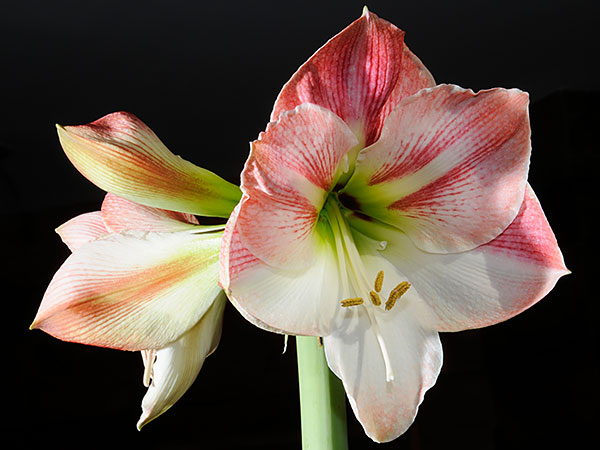
When choosing a Christmas tree this month, select one with firm needles that don’t drop off when the tree is raised up a few inches and dropped to the ground. The bottom of the stump should be moist with some sap present. Trees that were cut weeks or even months ago will drop their needles shortly after being brought indoors. The trees that retain their needles the longest are the balsam and white firs; red, white and Scots pines; and Douglas fir. Once the tree is at home, cut another 2 inches off the stump and immediately plunge the tree into a bucket of warm water. It’s not necesssary to add preservatives to the water. Make sure the stand is full of water each day. A freshly cut tree can take up as much as one gallon of water in a day. If left in a stand without water, the tree will form a seal across the stump which prevents it from taking up any more water. Dry trees can become serious fire hazards.
Gardeners interested in purchasing live trees and then planting them in their yards are taking a big risk in this area. Those who live in milder climates have much more success than those who live in areas where the ground has frozen by the time the tree is ready to be planted outside. Live balled and burlapped trees or those planted in containers can remain in the house for no more than one week before they break their dormancy. Trees must be acclimated gradually to indoor conditions before they are brought inside for one week and then acclimated gradually to outdoor conditions before they are planted in the ground. In most cases, the large planting hole must be dug earlier in the season before the ground freezes and the extra dirt kept in a garage where it won’t freeze.
Pot up new amaryllis bulbs in wide, squat containers using soilless mix. Allow the “shoulders” of the bulb to remain above soil level; water well once and then allow soil to dry out before watering again. Keep the pot away from direct sun, drafts, and heating vents. As the stalk grows, rotate the pot for even growth. Most amaryllis send up the stalk and flowers first. After flowering, allow the stalk to yellow and wither before removing from the bulb. When leaves emerge, continue to water the plant. After May 15, take the plant outside to receive morning sun and fertilize regularly with a dilute 10-10-10 or 15-15-15 mix. Bring the bulb in before October 15 for its resting period.
Either remove decorative foil from bottom of gift plant pots or punch holes in the foil to allow water to drain properly.
Flowering azaleas require moist soil, bright light, and occasional misting. Flowers will remain for months if old blossoms are quickly removed and the plant receives adequate moisture. Take the plant outdoors after May 15 to a semishaded spot in the garden where it receives morning light. Bring it back indoors before October 15.
Cyclamen plants prefer quite cool indoor conditions. Water them only when the soil dries out, and avoid splashing water on foliage. Remove faded flowers and their stems as soon as possible to keep the plant blooming in a tidy fashion.
Ivy topiary is a popular holiday plant that can last for years if given proper care. Ivy also prefers quite cool conditions in bright light far away from heating vents or fireplaces. Mist the plant regularly or swish upside down in a bucket of tepid water to keep the foliage clean and free of mites. As new growth emerges, train tendrils to desired form. Take the plant outside after May 15.
Poinsettia plants appreciate bright light away from heating vents, fireplaces, and drafty windows or doors. Maintain even moisture (but never soggy); plants will wilt dramatically if allowed to dry out.
Moth orchids prefer warm rooms in bright, but not direct, sun. Sudden temperature changes can cause a plant to drop buds. Orchids potted in fir bark generally require once-a-week watering. Those in potting soil can be watered less often. Moth orchids will bloom for months. Remove drying buds to maintain the beauty of the plant. After flowering, allow the stem to yellow before removing it. Begin fertilizing the plant twice a month with a dilute orchid fertilizer. This will encourage a new stem and more flowers the following year.
Paperwhite narcissus will require a cage or a ring of raffia tied around them to keep them from flopping as they grow. If purchased as bulbs, grow them in a shallow dish filled with pebbles rather than soil. Arrange the bulbs close together and cover them with pebbles, with just their tips exposed. The weight of the pebbles helps to keep them from falling to the side as they grow. Water just enough to encourage root growth, without soaking the bulbs. Discard after flowering, but rinse and keep the pebbles for future forced bulbs.

